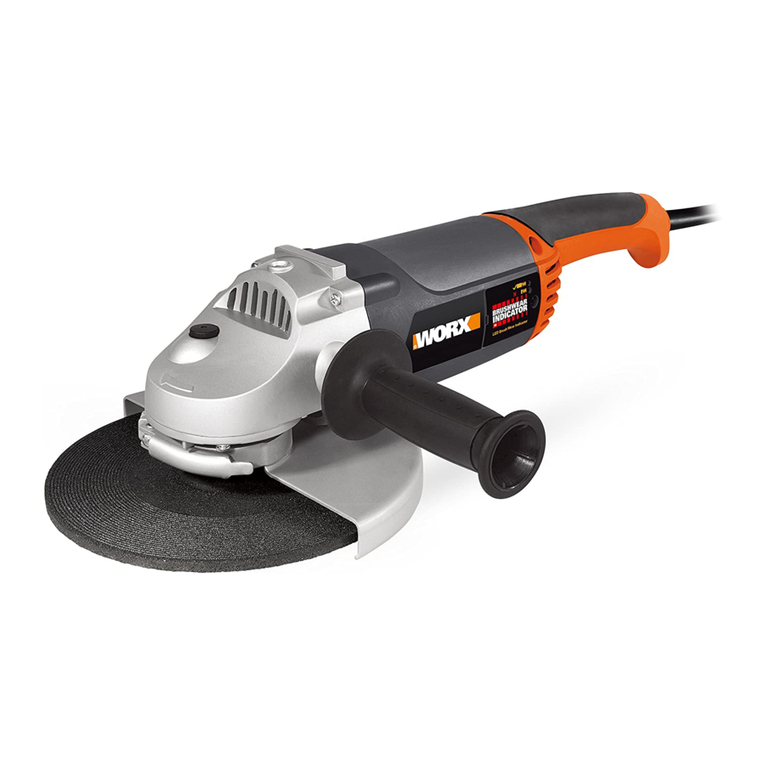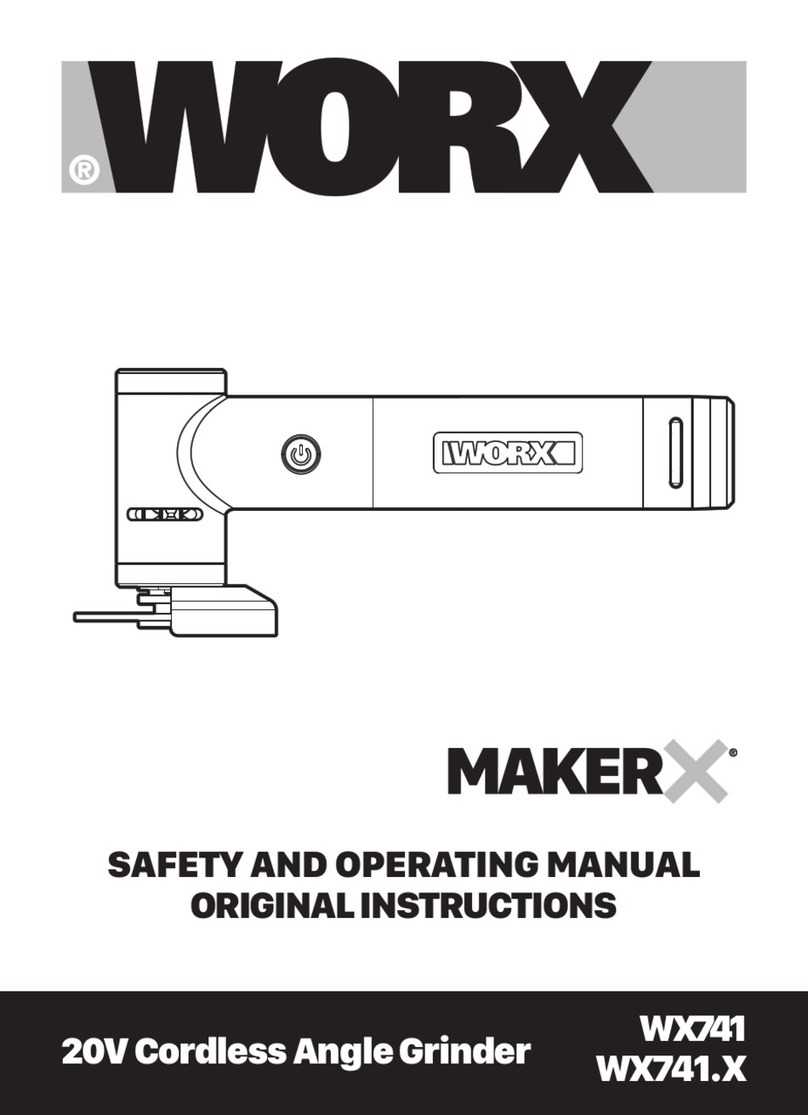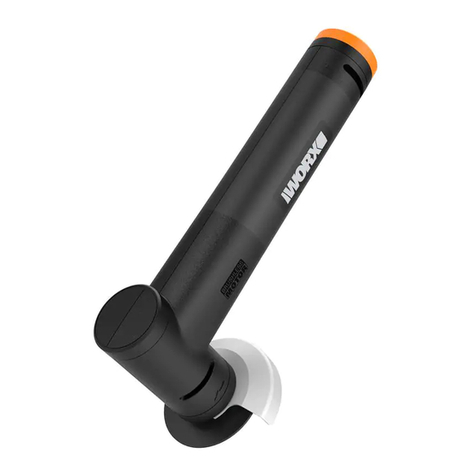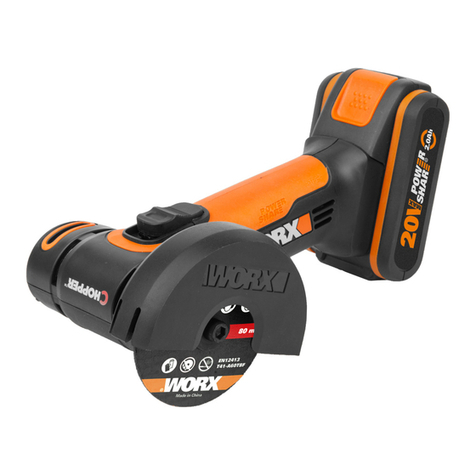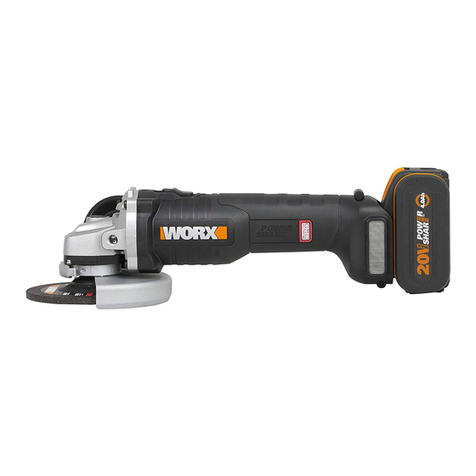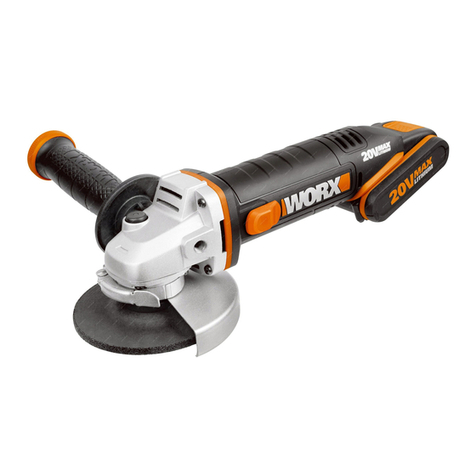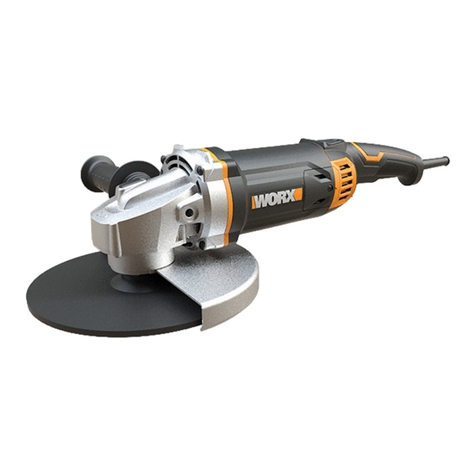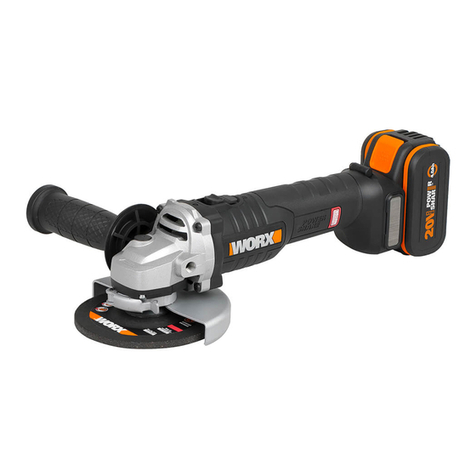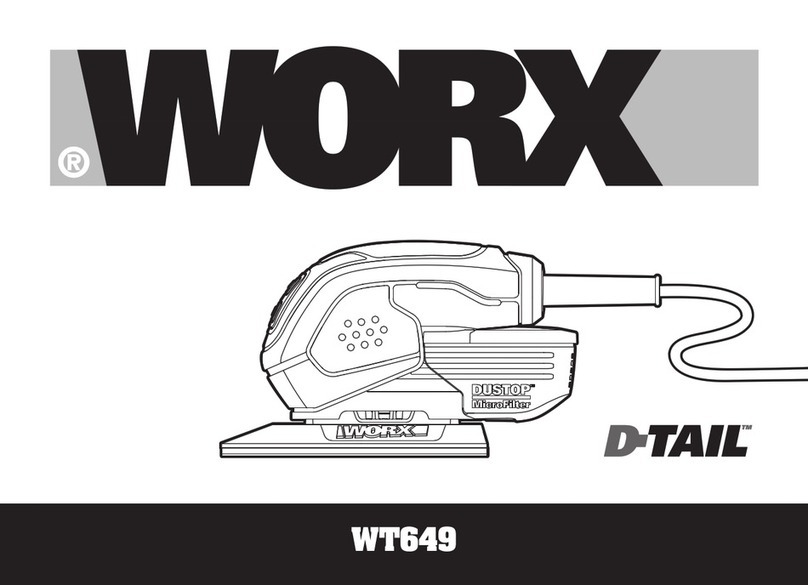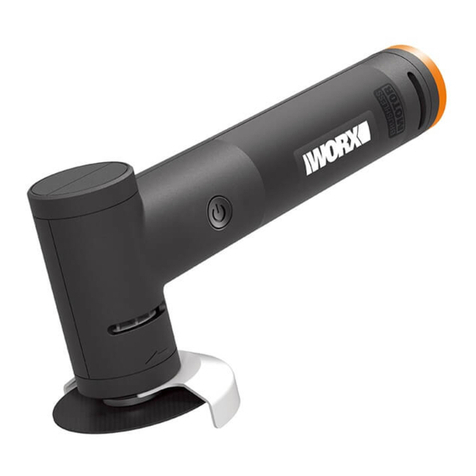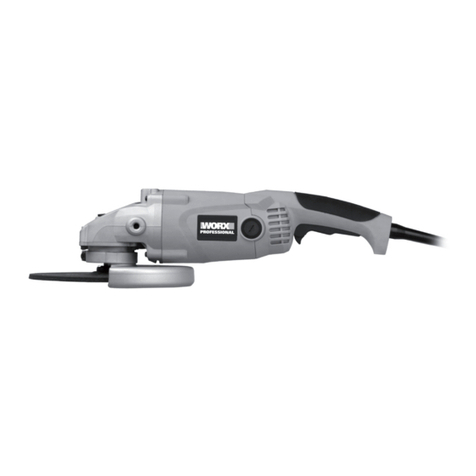4
workpiece fragments. The eye protection must be capable of
stopping flying debris generated by various operations . The
dust mask or respirator must be capable of filtrating particles
generated by your operation. Prolonged exposure to high
intensity noise may cause hearing loss.
Keep bystanders a safe distance away from work area.
Anyone entering the work area must wear personal protective
equipment. Fragments of workpiece or of a broken accessory
may fly away and cause injury beyond immediate area of
operation.
Hold power tool by insulated gripping surfaces only, when
performing an operation where the cutting accessory may
contact hidden wiring or its own cord. Cutting accessory
contacting a “live” wire may make exposed metal parts of the
power tool “live” and shock the operator.
Position the cord clear of the spinning accessory. If you lose
control, the cord may be cut or snagged and your hand or arm
may be pulled into the spinning accessory.
Never lay the power tool down until the accessory has come to
a complete stop. The spinning accessory may grab the surface
and pull the power tool out of your control.
Do not run the power tool while carrying it at your side.
Accidental contact with the spinning accessory could snag your
clothing, pulling the accessory into your body.
Regularly clean the power tool’s air vents. The motor’s fan will
draw the dust inside the housing and excessive accumulation of
powdered metal may cause electrical hazards.
Do not operate the power tool near flammable materials.
Sparks could ignite these materials.
Do not use accessories that require liquid coolants. Using water
3
4
5
6
7
8
Operations for which the power tool was not designed may
create a hazard and cause personal injury.
Do not use accessories which are not specifically designed
and recommended by the tool manufacturer. Just because the
accessory can be attached to your power tool, it does not assure
safe operation.
The rated speed of the accessory must be at least equal to
the maximum speed marked on the power tool. Accessories
running faster than their rated speed can break and fly apart.
The outside diameter and the thickness of your accessory must
be within the capacity rating of your power tool. Incorrectly
sized accessories cannot be adequately guarded or controlled.
The arbour size of wheels, flanges, backing pads or any other
accessory must properly fit the spindle of the power tool.
Accessories with arbour holes that do not match the mounting
hardware of the power tool will run out of balance, vibrate
excessively and may cause loss of control.
Do not use a damaged accessory. Before each use inspect
the accessory such as abrasive wheels for chips and cracks,
backing pad for cracks, tear or excess wear. If power tool
or accessory is dropped, inspect for damage or install an
undamaged accessory. After inspecting and installing an
accessory, position yourself and bystanders away from the
plane of the rotating accessory and run the power tool at
maximum no-load speed for one minute. Damaged accessories
will normally break apart during this test time.
Wear personal protective equipment. Depending on
application, use face shield, safety goggles or safety glasses.
As appropriate, wear dust mask, hearing protectors, gloves
and workshop apron capable of stopping small abrasive or
9
10
11
12
13
14
15
16

